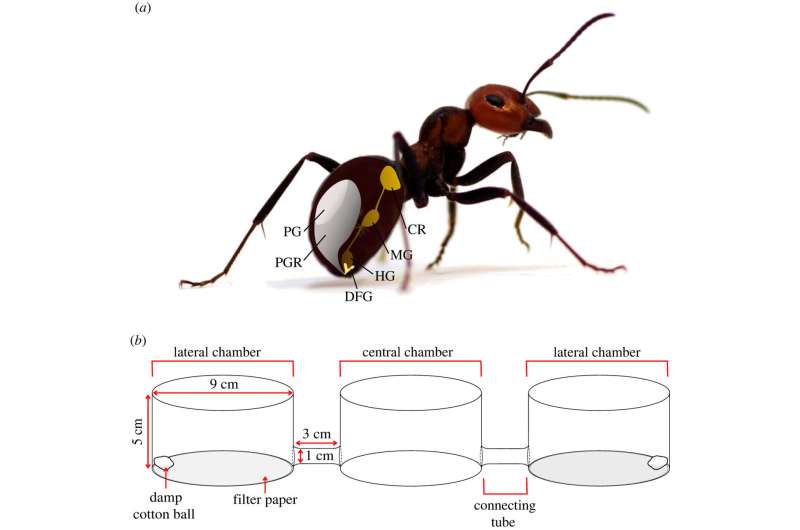
If you’re outside enjoying the spring sunshine, then chances are, ticks are too. However, new research from Simon Fraser University (SFU) suggests the use of ant pheromones as a topical repellent, or as an environmental barrier, may help protect hikers and campers from the harmful bites of black-legged ticks, which could carry Lyme disease.
“Ticks like a lot of the places and a lot of the times of years that we also like to be outside enjoying the weather,” says lead author Claire Gooding, a member of the SFU Gries Lab. “There’s quite a big risk of tick encounters in the summer, outdoor sports season. People often encounter them on the sides of trails.”
A paper published in Royal Society Open Science looked at what predators (ants, spiders or beetles) black-legged ticks might avoid and what adaptations they might have to avoid them.
“We decided to look at ants because they are social insects and use a huge range of pheromones to communicate with one another,” says Gooding. “They’re chemically noisy. And for something that perceives the world chemically, they’re easy to predict where they’ll be, based on these pheromones.”
Ticks transmit more diseases that any other arthropods and their natural ranges may be expanding due to climate change, increasing the need for management strategies as well as new repellents. The study found that ticks avoided surfaces where ants had been, even if those ants were removed.
“They could see that there were ants and basically go, “I’m not going to go there, because there may be ants there, or there may be ants there again soon in the future.'”
From there, Gooding and the team identified the specific chemical pheromones as well as the two ant glands that produced them. They then worked with a synthetic chemist and an analytical chemist to recreate a synthetic version of those pheromones. They found that ticks avoided the synthetic pheromone too.
The team, which works with industrial sponsors to further discoveries into the applied world, has a patent application on the repellant chemicals. They are hoping to bring them to market for real-world use, either as a topical repellent (like mosquito repellent), or as an environmental repellent, which could be used with a physical barrier, like wood chips, to deter ticks from entering an area or a hiking trail.
More information:
Claire E. Gooding et al, Blacklegged ticks, Ixodes scapularis, reduce predation risk by eavesdropping on communication signals of Formica oreas thatching ants, Royal Society Open Science (2024). DOI: 10.1098/rsos.231355
Citation:
Ant pheromones may help protect hikers and campers from ticks (2024, April 11)
retrieved 11 April 2024
from https://phys.org/news/2024-04-ant-pheromones-hikers-campers.html
This document is subject to copyright. Apart from any fair dealing for the purpose of private study or research, no
part may be reproduced without the written permission. The content is provided for information purposes only.







